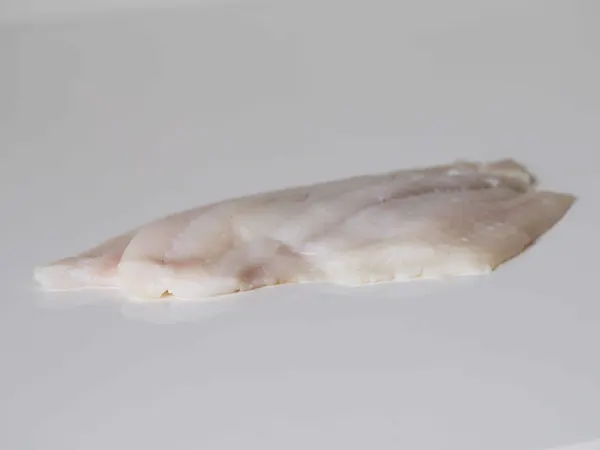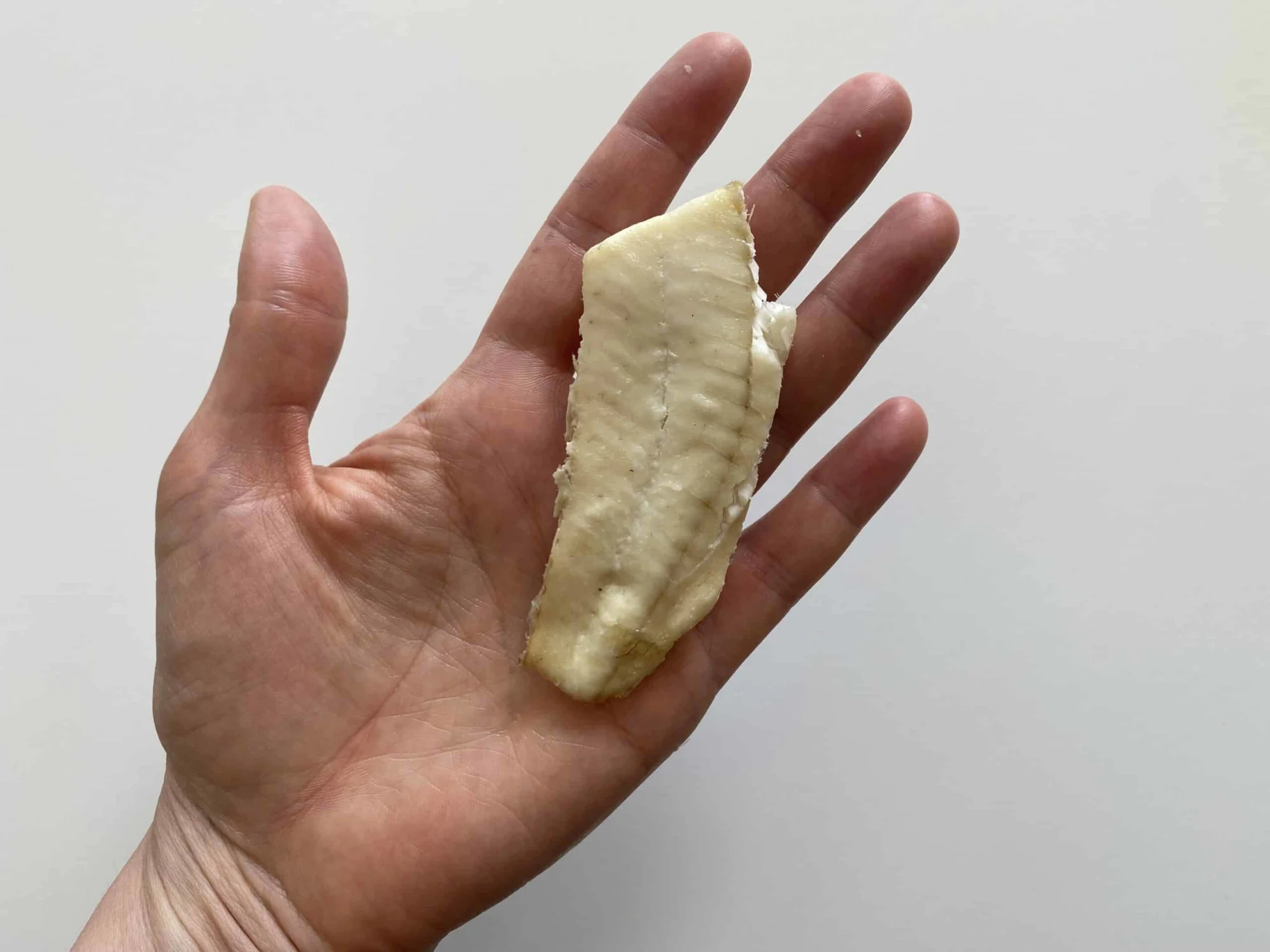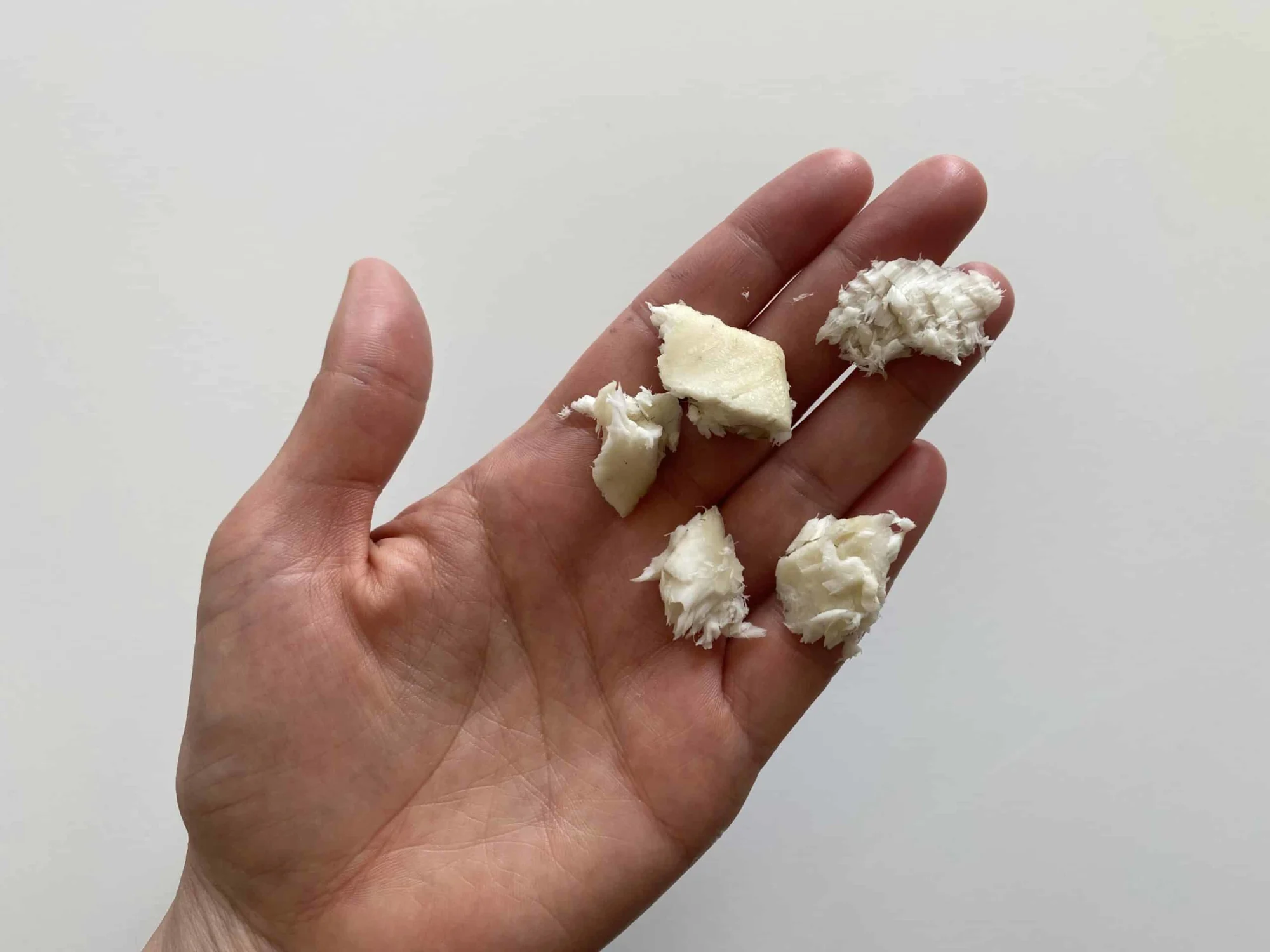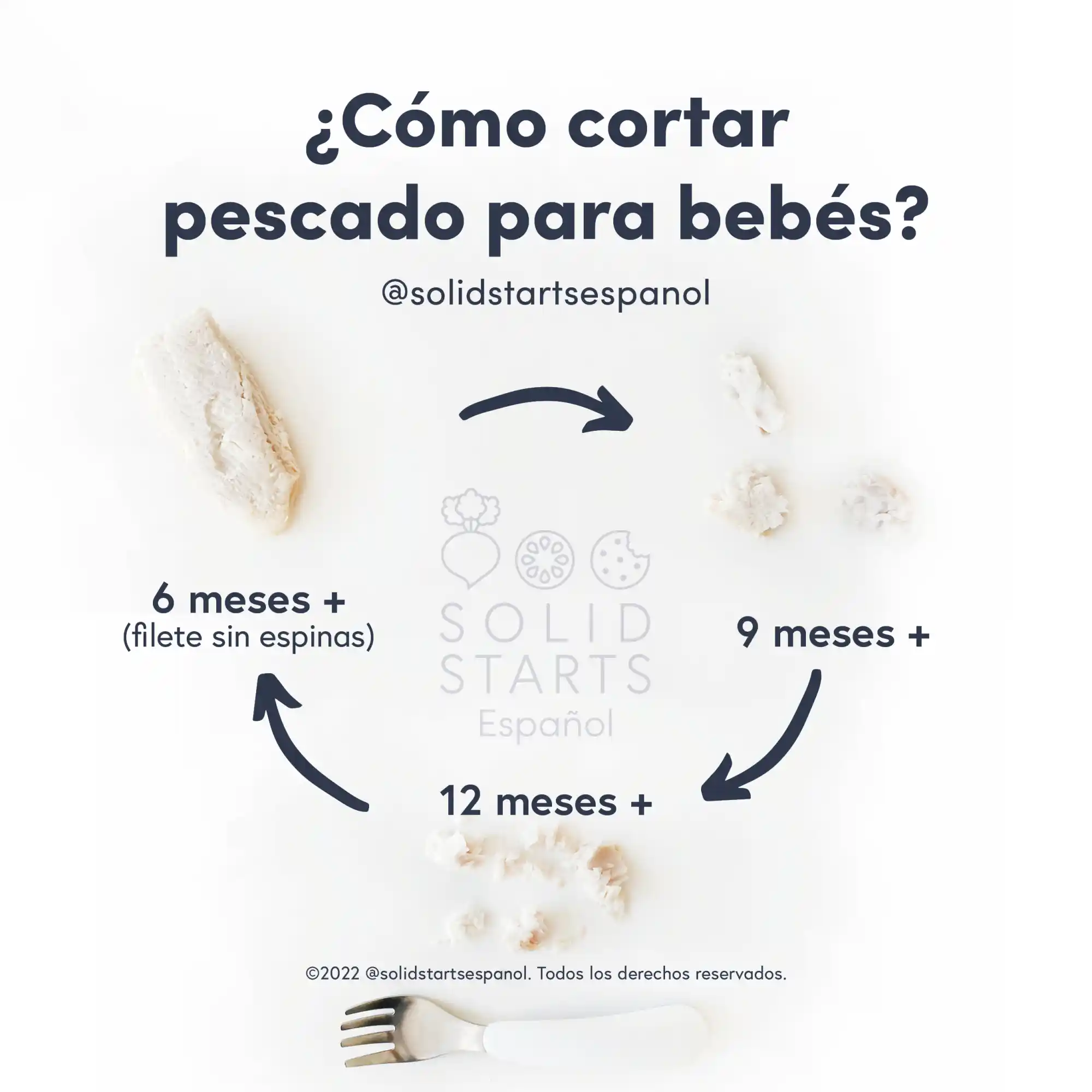Acceda a la base de datos First Foods® en Solid Starts App.
Leer másPlatija
Pescado con aletas
Sugerencia de edades
6 meses
Alto contenido de hierro
No
Alérgeno común
Sí

When can babies eat plaice?
¡Lo sentimos, esta página aún no está disponible en español! Estamos trabajando tan rápido como podemos para traducir todo nuestro contenido, gracias por tu paciencia y apoyo.
Plaice may be introduced as soon as baby is ready to start solids, which is generally around 6 months of age. Plaice receives a “satisfactory” rating in our guide, Best & Worst Fish for Babies. Like most fish, plaice contains trace amounts of methylmercury due to air pollution that settles into the ocean and binds to the flesh of fish. Compared to other fish, plaice is relatively low in mercury and considered safe for babies around 1-2 times per week.
How do you prepare plaice for babies with baby-led weaning?
Cada bebé se desarrolla a su propio ritmo, y las sugerencias que ofrecemos sobre cómo cortar o preparar determinados alimentos son generalizaciones para una amplia audiencia.
6 to 12 months old:
Cut pieces of cooked, deboned plaice into strips about the width and length of two adult pinky fingers next to one another and serve as finger food with a sauce like lemon butter, garlicky olive oil, or a mild salsa verde. Keep in mind that baby will likely smush the fish in their hand—this is okay. You can also mix cooked plaice into mashed vegetables or plain yogurt and let baby self-feed. Alternatively, pre-load a spoon or age-appropriate fork with the mash and let baby try to pick it up or grab it from you.
12 to 24 months old:
Break cooked, deboned plaice into flakes and serve them plain on a plate with a dollop of mayonnaise or tahini as finger food or fork practice, or incorporate them into a dish. You can also continue to serve whole strips or mashed fish as described above. If you have the time and inclination, try homemade fish cakes by adapting our cod cakes recipe. Plaice works well as a substitute for cod in most recipes.


For more information, see the Solid Starts Fish guide—the world’s only guide to seafood for babies and toddlers under age 2.
¡Lo sentimos, esta página aún no está disponible en español! Estamos trabajando tan rápido como podemos para traducir todo nuestro contenido, gracias por tu paciencia y apoyo.
Is plaice a common choking hazard for babies?
No. Plaice is not a common choking hazard, though bones in fresh fish are if not removed. To minimize the risk, be sure to pick out any lingering bones before serving. As always, make sure you create a safe eating environment, and stay within an arm’s reach of baby during meals. For more information on choking, visit our sections on gagging and choking and familiarize yourself with the list of common choking hazards.
Is plaice a common allergen?
Yes. Finned fish are a classified as a Global Priority Allergen by the World Health Organization. It’s estimated that only 0.2 percent of people are allergic to finned fish worldwide, but the prevalence of fish allergies in children, while variable, is even less than in adults. About 40% of people with finned fish allergies don’t experience their first allergic reaction until adulthood. Unfortunately, most individuals who are allergic to finned fish do not outgrow the allergy.
Some individuals with finned fish allergy may react from inhaling proteins that become aerosolized when cooking fish. If this is the case for baby, you may wish to avoid cooking fish in the household when baby is present.
Around 50% of individuals with one finned fish allergy will react to another fish as well. This is because the major allergen in finned fish, beta-parvalbumin, is present in most fish, regardless of species. Due to the risks of cross-contamination or mislabeling of fish, allergists often recommend that those allergic to one species of finned fish avoid all finned fish until meeting with an allergist to determine which fish might be safely introduced into the diet. This is an individualized recommendation, so be sure to confirm with your allergist before offering other finned fish if your baby is allergic to plaice.
Finned fish are a known trigger of food protein-induced enterocolitis syndrome, also known as FPIES. FPIES is a delayed allergy to food protein which causes the sudden onset of repetitive vomiting and diarrhea to begin a few hours after ingestion. Left untreated, the reaction can result in significant dehydration. Unlike other food allergens, FPIES to finned fish may not present until later in life, and tends to be life-long.
Lastly, a note on scombroid poisoning, which is sometimes mistaken for a fish allergy. Scombroid poisoning is a type of food poisoning that occurs when someone eats fish that has been improperly refrigerated. This allows a large amount of histamine to build up in the fish. When consumed, this large load of histamine can cause symptoms that mimic those of an allergic reaction, causing some people to believe that they have developed a finned fish allergy, even if they are not allergic. Ensuring that fish has been stored at adequately cool temperatures can minimize the risk of such a reaction.
If you suspect baby may be allergic to fish, consult an allergist before introducing plaice. As with all common allergens, introduce plaice in small amounts at first and watch closely as baby eats to see if any adverse reaction occurs. If all goes well, gradually increase the serving size over time. Once common food allergens are successfully introduced, it is recommended to keep them in the diet regularly (twice weekly, if possible). However, this doesn’t mean that each different fish species must be offered multiple times a week. Finned fish share the same major proteins, so it is perfectly acceptable to rotate finned fish varieties according to availability and preference.
Is plaice healthy for babies?
Yes. While not the lowest in mercury among the fish in the sea, plaice generally has much less mercury than other popular white fish, like halibut or grouper. Plaice is a complete source of protein and a good source of vitamins B6 and B12, which are important for cardiovascular and neurological health. Plaice also contains healthy fats and vitamin D, nutrients to fuel brain development and immune function. Plaice is a relatively low-fat fish, so feel free to add a pat of butter or a healthy oil such as avocado, coconut or olive oil to boost fat content, as babies need lots of fat for brain development and growth.
As with most fish, plaice contains small amounts of the heavy metal mercury. Mercury is a persistent and progressive toxin to which babies are particularly susceptible. Thankfully there are lots of fish low in mercury that babies can enjoy. Furthermore, fish offers nutrients that are particularly important for babies (such as vitamin D and selenium) that can be hard to find in other foods. To minimize exposure to mercury from fish, simply focus on those fish that are lowest in mercury and limit the amount and frequency of fish that have higher amounts of mercury. More on this topic in our guide, Best & Worst Fish for Babies.
Can plaice help babies poop?
Plaice isn’t generally thought of as a food that promotes pooping. That said, it can play an important role in healthy bowel movements as part of a varied diet. Diets featuring white meats like plaice may promote the presence of beneficial bacteria, like Lactobacillus, which contributes to a healthy and diverse gut microbiome. Pooping patterns can vary significantly from child to child, so be sure to talk to your pediatric healthcare provider if you have concerns about baby’s pooping or digestive function.
Where do plaice live?
Plaice is the common name for a group of bottom-dweller fishes in Europe, North America, and North Asia. The group’s geographic reach has resulted in many names: akagarei, kurokarei, rødspætte, scholle, spätta, and skarkoli to name a few. Like flounder and sole, plaice is a part of the flatfish family and moves its pancake-shaped body parallel to the sea floor. It has camouflaged skin that mirrors the ocean on the side facing the water’s surface and reflects the sand on the side facing the earth. The two-tone hue is not its only peculiar quality: plaice hatches with one eye on each side of its body, and as the fish matures, one eye moves to the other side.
What are recipe ideas for cooking with plaice?
Plaice can be prepared in many different ways: baked, boiled, deep-fried, pan-fried, and preserved by drying, fermenting, and salting. Along with cod and haddock, plaice is commonly battered and fried with potatoes to make the popular “fish and chips” dish of the United Kingdom that is enjoyed around the world. Like other white fish, its mild flavor complements the brightness of lemon and fresh, vegetable flavors—like peas.
Escrito y revisado por los/las siguientes especialistas
E. Cerda, MS, CNS, LDN
A. Gilbaugh, RD, CNSC
K. Grenawitzke, OTD, OTR/L, SCFES, IBCLC, CNT
S. Bajowala, MD, FAAAAI. Board-Certified Allergist & Immunologist (allergy section)
R. Ruiz, MD, FAAP. Board-Certified General Pediatrician & Pediatric Gastroenterologist
Consejos de expertos directo a tu bandeja de entrada
¡Suscríbete y recibe correos semanales con recetas, consejos y más!
Copyright © 2025 • Solid Starts Inc



